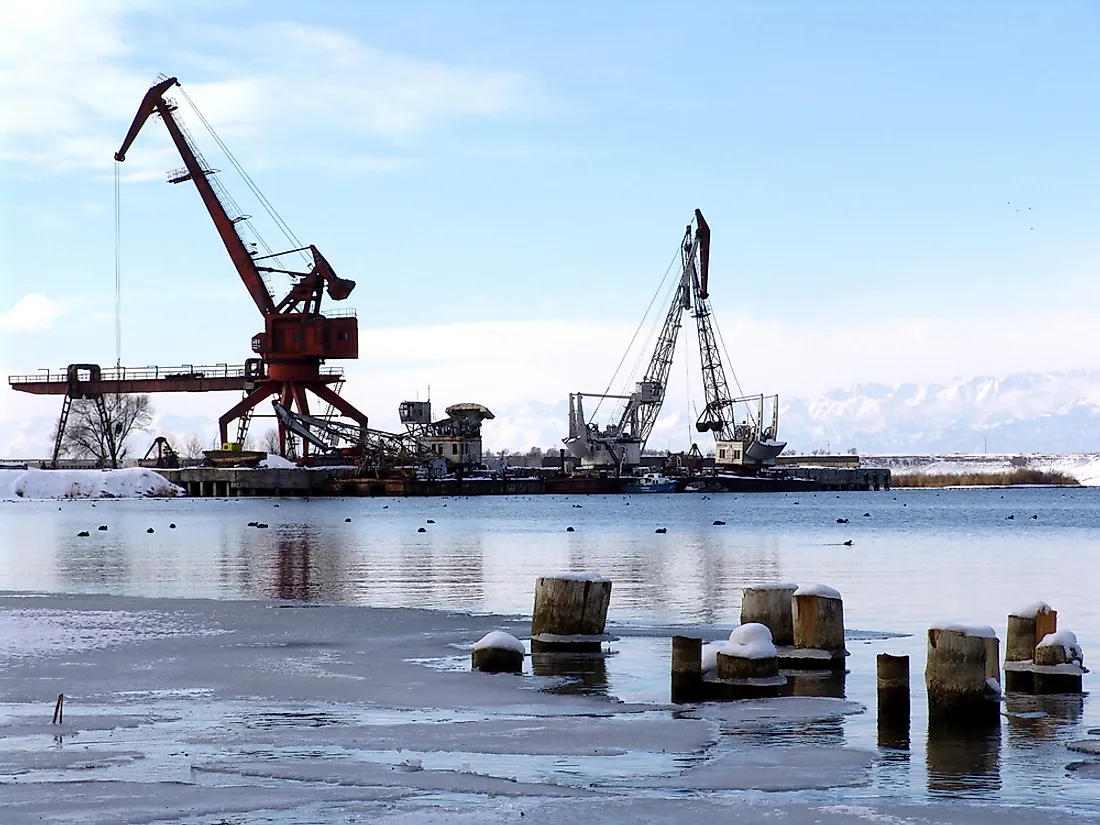What Are The Major Natural Resources Of Uzbekistan?

Uzbekistan is a double-landlocked country found in central Asia. The country covers an area of 172,700 square miles, and it is the world's 56th largest country regarding the surface area and the 42nd largest by population. In 2017, Uzbekistan had a GDP of $22.3 billion and in 2014 it had a GDP per capita of $5,600. Uzbekistan has numerous natural resources within its borders which include arable, beautiful scenery, minerals such as uranium, lead, zinc, copper, silver, gold, petroleum, and natural gas.
Arable Land
According to World Bank, Uzbekistan had arable land which was about 10.34% of the total land area as of 2014. Agriculture employs approximately 28% of Uzbekistan’s labor force and accounts for 24% of the country's GDP as of 2006. Most of the crops in the country require irrigation which is carried out primarily in the river valleys and oases. The size of cultivated land in the country is about 4.5 million hectares, which is equivalent to about 10% of the total land area and is used for both crops and animals. Desert grazing region cover about half of the country’s land area and supports sheep only. The most important cash crop in the country is cotton, which accounted for about 17% of the country’s total exported items in 2006.
Minerals
Minerals contribute significantly to the economy of Uzbekistan and gold is one of the biggest earners of foreign income. The country is the world’s 7th largest in the production of gold, and about 80 tons are produced every year. It is believed that Uzbekistan has the fourth largest gold reserves in the world. Muruntau gold deposit is a major gold mine and the world’s largest gold mine located in Kyzyl Kum Desert. The mine is the largest gold mine of its kind in the world operating as an open pit and produces approximately 2 million ounces of gold every year. The open pit measures about 2.17 miles by 1.55 miles and approximately 0.35 miles deep as of 2012. The coal deposit in Muruntau was discovered in 1958, although the region has been the source of turquoise ever since the period of the Silk Road. Other minerals in significant quantities in Uzbekistan include zinc, lead, copper, uranium, and tungsten.
Oil and Gas
Uzbekistan is blessed with oil and gas, and currently, the country produces about 3 million tons annually and it has recoverable oil reserves of approximately 81.4 million tons. Uzbekistan has been producing oil for more than a century, but large-scale production began in the 1950s. Other assessments in the country have put estimates of proven oil reserves at about 594 million barrels, and the majority of the oil fields currently discovered in the country are found mostly in the southwest part of the country in the Tadzhik-Fergana Basin and Amu Darya Basin. From the 1990s oil production in the country has been falling by about 80,000 barrels per day or approximately 42% in a span of ten years. All the crude oil and condensate produced in Uzbekistan are processed in the refineries within the country or used as feedstock for petrol chemical industries. There are approximately 171 fields of oil and natural gas, and 51 of these produce only oil, and 17 produce gas condensate.
Economy of Uzbekistan
Uzbekistan experienced a GDP growth of 6% in 2017, which was slightly lower than 7.8% growth in 2016. The country has experienced a sustained and stable growth which has been possible due to favorable terms of trade led by export items such as natural gas, gold, copper, and cotton. The government also managed to adopt the best macroeconomic management with limited exposure to international financial markets. The country has been identified as having one of the most dynamic economies in the Commonwealth of independent states. Inflation in the country stood at 13%, and public debt has reduced to about 15.1% of GDP, while employment had remained steady at about 4.9% in 2017. Uzbekistan was ranked as the second country in the world regarding the pace of economic development in 2017 after Ethiopia.











